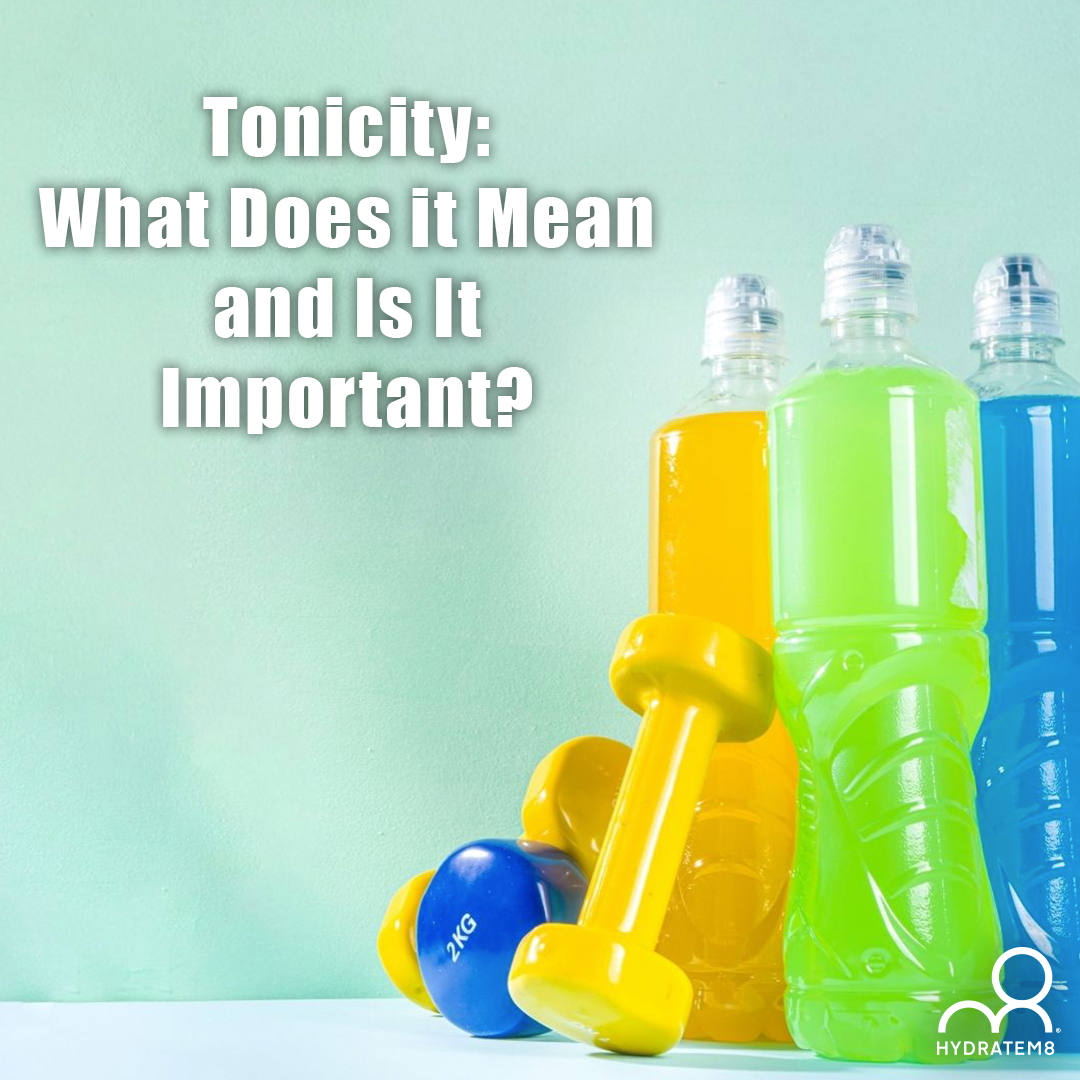You’ve probably heard of the term tonicity, there are many sports brands which state their drinks are isotonic. When it comes to drinks, the term isotonic describes a drink which is a similar concentration to human blood.
There are in fact three terms which are important here:
· Isotonic (similar concentration to human blood)
· Hypotonic (lower concentration than human blood)
· Hypertonic (higher concentration than human blood)
These terms are important when considering which sports drink you need when training because their tonicity affects the amount of energy it will provide and how quickly it will be absorbed in the bloodstream, replacing the fluid being lost in sweat.
Isotonic drinks
Most sports drinks are isotonic and are designed to deliver a decent amount of energy. They are usually suitable for high-intensity exercise performed for a short duration because they can provide needed carbs which may be more important than preventing dehydration. However, in hot conditions where increased sweating means you need to drink more, these drinks can cause stomach upset.
Hypotonic drinks
Hypotonic drinks have a lower concentration than blood and are absorbed fastest into the bloodstream but provide the least amount of carbohydrates per unit volume. These drinks are best if you are looking to prevent dehydration when exercising. Unless you really need to think about replacing electrolytes, then water should suffice for moderate exercise.
Hypertonic drinks
Hypertonic drinks are made with lots of carbohydrates making their concentration higher than that of blood. These drinks are for when you need calories quickly and hydration is not a priority.
Cell Tonicity
You may also remember learning about cell tonicity and osmotic pressure at school. When the body becomes dehydrated, there are changes to the osmotic pressure surrounding cells.
Cells and hypertonicity
If cells such as red blood cells are exposed to a hypertonic solution, the osmotic pressure is higher outside the cell than inside it. Therefore, this causes water to move out of the cell via a process called osmosis (where fluid passes through a semi-permeable membrane from a less concentrated to a more concentrated solution). The cells will lose their normal shape and can shrink.
Cells and isotonicity
If cells are exposed to an isotonic environment then the pressure both inside and outside the cell is equal. Therefore, there is no movement of water from the cell or into the cell and it retains its shape.
Cells and hypotonicity
In hypotonic solutions, water moves from outside the cells into the cells via osmosis, causing the cells to increase in size and burst (a process called haemolysis). Therefore, the cells will become damaged and there may be a reduction in function i.e. oxygen carrying capacity.
Having a good understanding of tonicity gives a good insight into how dehydration can affect the cells of the body. An isotonic solution is best because the osmotic pressure within and outside the cell is equal, so there is no net movement of water and the cells will retain their shape and function. Equally, when exercising, water should be enough to keep you hydrated unless you are working at high intensity.

